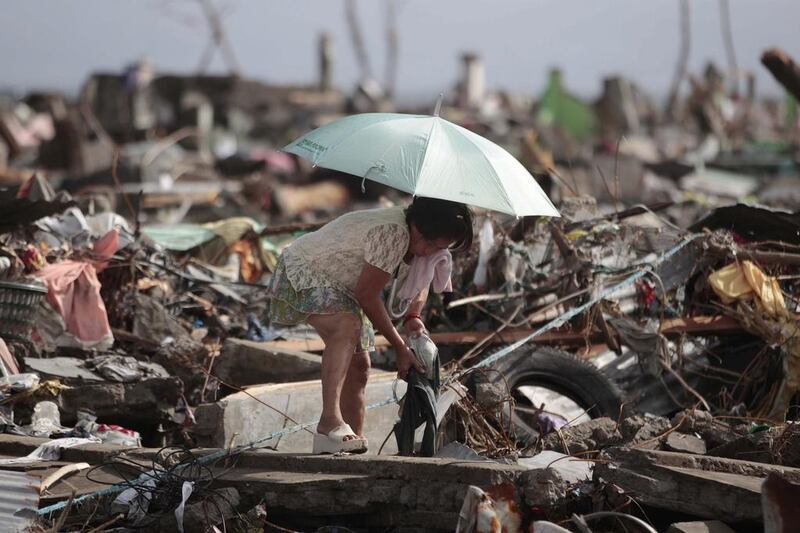MANILA // Philippine authorities were sure they had done enough to prevent mass casualties from Super Typhoon Hainan, but with 10,000 people now feared dead experts say parts of the country may be helpless against relentless storms.
The country endures seemingly never-ending natural disasters, many of them deadly, and the president, Benigno Aquino, has made saving lives a top priority by improving preparation strategies.
With nearly one million people evacuated from high-risk areas and a highly publicised alert system in place before Haiyan made landfall on Friday, Mr Aquino’s aides expressed confidence that this time they were prepared.
But Haiyan turned out to be one of the strongest typhoons ever recorded, and sent waves up to five metres high hundreds of metres inland, wiping out entire communities.
More than 10,000 people are feared killed on one island alone, according to its regional police chief.
The International Organisation for Migration (IOM) warned that the damage could even rival the 2010 earthquake in Haiti which left tens of thousands dead and whose effects are still being felt.
Nevertheless, experts said the extent of death and destruction was largely beyond the control of local authorities, which also meant the same problems could again lead to widespread carnage.
“This storm is unprecedented. Many things like this are outside of human intervention,” said Lawrence Jeff Johnson, the International Labour Organisation’s country director.
“They did what they could. There were a lot of lives saved. They evacuated many areas.”
Tacloban, the provincial capital of the central island of Leyte, is believed to have been among the worst hit, when storm surges swept away trees, trucks and houses throughout the city of 220,000 people.
Jori Loiz, a government weather forecaster, said Tacloban’s flat coastal terrain, with only a few small hills for refuge from floods, meant that residents literally had nowhere to hide.
“With all these people, where could they have gone? If I was the governor, I could not have figured out how to relocate these people,” Mr Loiz.
Officials said many residents had adhered to evacuation instructions, only to die in emergency centres where they were told they would be safe.
Reynaldo Balido, a spokesman for the National Disaster Risk Reduction Management Council, said schools and churches that had served as shelters in previous storms were destroyed by the tsunami-like waves.
“They followed instructions. The storm was too strong. Will you blame them for going to the wrong evacuation centres?” he said angrily in response to questions about why people in Tacloban were not protected.
Haiyan hit the Philippines as a category five storm with maximum sustained winds of 315 kilometres an hour – one of the most powerful ever recorded anywhere in the world.
The Philippines energy secretary Jericho Petilla, a former governor of Leyte, also said the magnitude of the storm was simply overwhelming.
“We never had a storm this strong. You can make preventive measures but you can never prepare enough for something so big,” he said.
“If you really don’t want anyone to be hurt, evacuate the whole province.”
The IOM country director Marco Boasso praised the Philippines’ disaster measures.
“This is a very responsive and organised government, especially compared to others I cannot name for diplomatic reasons,” he said.
But he suggested that Philippine resources had been overstretched by one calamity after another.
They include Typhoon Bopha which left 1,900 people dead or missing in December last year, then a bloody three-week conflict in a southern city attacked by Muslim guerrillas in September, and a deadly 7.1-magnitude earthquake in October.
“The government was doing as much as it can. But how much can be done when disaster happens again and again?” he said.
* Agence France-Presse





